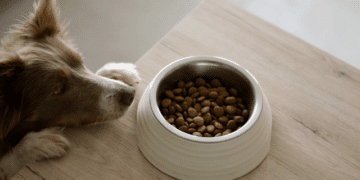Keeping your pet healthy goes beyond good food, regular exercise, and love. One of the most crucial aspects of pet care is ensuring they receive the right vaccinations at the right time. Vaccines help protect pets from a variety of serious, sometimes fatal diseases. Whether you’re a new pet parent or looking to update your furry companion’s health records, understanding the essential pet vaccines is key to a long, healthy life for your dog or cat.
This pet vaccination guide will walk you through the core and non-core vaccines every dog and cat may need, along with vaccination schedules, booster shot information, and the importance of working closely with your veterinarian.
Why Vaccines Are Important for Pets
Vaccines help your pet’s immune system recognize and fight off harmful pathogens before they cause illness. Just like in humans, vaccines play a vital role in preventing contagious diseases in animals and can also prevent transmission to other pets and even humans in some cases.
Not only do vaccinations help keep your pet safe, but they also contribute to broader community health by reducing the risk of outbreaks, especially in shelters, parks, and boarding facilities.
Core vs. Non-Core Vaccines
Vaccines for pets are generally divided into two categories:
Core Vaccines
Core vaccines are considered essential for all pets, regardless of age, breed, or lifestyle. These vaccines protect against diseases that are widespread, severe, and often fatal. Most countries and localities legally require certain core vaccines, like rabies.
Non-Core Vaccines
Non-core vaccines are optional and are recommended based on your pet’s lifestyle, location, and specific exposure risks. These vaccines are especially important if your pet spends a lot of time outdoors, travels frequently, or interacts with other animals.
Essential Vaccines for Dogs
Here’s a breakdown of the core and non-core vaccines every dog owner should know about:
Core Dog Vaccines
-
Rabies
A fatal virus transmitted through bites, rabies affects the brain and is transmissible to humans. This vaccine is required by law in most areas. -
Distemper
A highly contagious viral disease affecting the respiratory, gastrointestinal, and nervous systems. Puppies are especially vulnerable. -
Parvovirus
Known for causing severe gastrointestinal symptoms, parvovirus can be deadly and spreads easily among unvaccinated dogs. -
Adenovirus (Canine Hepatitis)
Affects the liver and can lead to long-term complications or death. This vaccine is usually combined with distemper and parvo into a single shot known as the DHPP vaccine.
Non-Core Dog Vaccines
-
Bordetella Bronchiseptica
Commonly referred to as kennel cough, this vaccine is essential for dogs that board, attend daycare, or go to the groomer. -
Leptospirosis
A bacterial infection that affects the kidneys and liver. It can also be transmitted to humans. -
Lyme Disease
Transmitted through ticks, Lyme disease can cause joint pain, kidney problems, and neurological issues. -
Canine Influenza
A respiratory virus that spreads quickly in crowded environments like shelters and kennels.
Dog Vaccination Schedule
Puppy vaccine schedule:
-
6–8 weeks: First DHPP vaccine
-
10–12 weeks: Second DHPP + optional non-core vaccines
-
14–16 weeks: Final DHPP + Rabies
Adult dog vaccine schedule:
-
Annual or triennial DHPP boosters (based on vet’s recommendation)
-
Rabies every 1–3 years (depending on local law)
-
Non-core vaccines annually, if at risk
Essential Vaccines for Cats
Cats also require a mix of core and non-core vaccinations to protect them from potentially life-threatening diseases.
Core Cat Vaccines
-
Rabies
Legally required in many areas, especially for outdoor cats or those that come into contact with wildlife. -
FVRCP Vaccine
A combination vaccine that protects against:-
Feline Viral Rhinotracheitis: a herpesvirus affecting the upper respiratory tract
-
Calicivirus: another virus that causes respiratory and oral issues
-
Panleukopenia: also known as feline distemper, a deadly disease that attacks the immune system
-
Non-Core Cat Vaccines
-
Feline Leukemia Virus (FeLV)
Recommended for kittens and outdoor cats. FeLV suppresses the immune system and can lead to various infections and cancers. -
Chlamydia
A bacterial infection that can cause conjunctivitis and respiratory symptoms. -
Bordetella
Not common, but may be necessary in multi-cat environments or shelters.
Cat Vaccination Schedule
Kitten vaccine schedule:
-
6–8 weeks: First FVRCP
-
10–12 weeks: Second FVRCP + FeLV (if recommended)
-
14–16 weeks: Final FVRCP + Rabies
Adult cat vaccine schedule:
-
FVRCP boosters every 1–3 years
-
Rabies vaccine every 1–3 years
-
FeLV and other non-core vaccines based on lifestyle
The Importance of Booster Shots
Vaccines aren’t a one-and-done process. Booster shots are essential to maintain your pet’s immunity over time. Most core vaccines require a series of initial doses followed by regular boosters to stay effective.
Annual check-ups with your vet help ensure your dog or cat is up to date with their dog and cat vaccination schedule, as immunity can wane over time.
Consult Your Veterinarian
Every pet is different. Your vet will consider factors like age, health status, environment, and travel habits before creating a tailored vaccination plan. Don’t hesitate to ask questions like:
-
Is my indoor-only cat at risk for FeLV?
-
Does my dog need a Lyme disease vaccine in our area?
-
How often should boosters be given?
Your veterinarian is your best resource for determining which core vaccines for pets and non-core options are necessary for optimal health.
Conclusion
Vaccinating your pet is one of the most responsible steps you can take as a pet owner. It protects not just your animal but also other pets and humans they may encounter. Following the appropriate puppy and kitten vaccine schedule and staying current on boosters ensures your pet lives a long, healthy, and active life.









